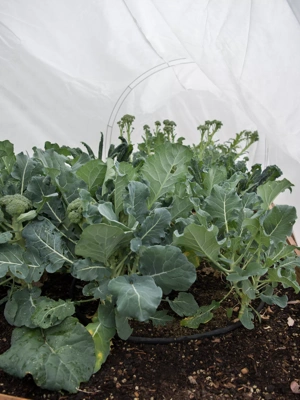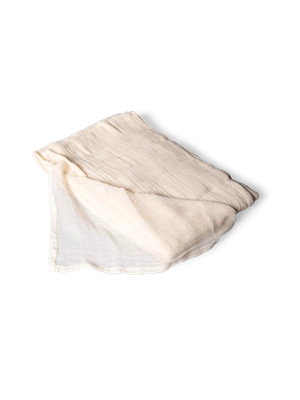Cabbage

Cabbage is a dependable, workhorse of a vegetable. Before refrigeration and transportation made other, more interesting vegetables available, much of Europe and colonial America relied on the lowly cabbage. It can be a delightful addition to even the fanciest of menus, but its reputation has suffered badly by overcooking and lack of imagination.
Given cool weather and adequate moisture, cabbage is easy to grow. Spurts of hot weather can yield split heads or rotten interiors. In the South, cabbage can be grown in the winter months; in cooler zones it does well as a spring or fall crop. Early cabbages can be ready to eat in 50 or 60 days, while the big varieties that are grown for winter storage need up to 85 days after transplanting.
Cabbages are heavy feeders, requiring soil well fortified with compost and organic fertilizer. Cabbages suffer if the soil doesn't provide sufficient phosphorous and calcium. To avoid these nutrient deficiencies, fertilize your cabbage plants with fish emulsion or liquid seaweed in early summer.
For spring planting, start cabbage seeds indoors about six weeks before the last frost date in your area. The plants will tolerate cold, and seedlings can go into the garden as soon as the soil is dry enough to be worked and is 40 degrees or more. Late-season storage cabbages need to be started and planted later.
The roots of cabbage are shallow and can be easily damaged. The best way to prevent that is to surround the plants with a 2- to 3-inch layer of shredded leaves, newspaper or straw. Cabbages want consistently cool, moist soil and this mulch will also help ensure they enjoy ideal growing conditions.
If flea beetles, cabbageworm or other pests bother your cabbage plants, you can protect them with a layer of row cover fabric.
Cabbage comes in two colors (red and green), two leaf types (smooth and puckered), two maturity dates (early or late) and several shapes (round, flat and pointed). All have a similar flavor.
If you grow early cabbages, harvest by slicing off the cabbage as high on the stalk as you can. The stub will often produce little baseball-sized cabbages, particularly if you cut an "X" on the top of the stem.
Last updated: 01/28/2021
Print this Article:
Related items
Get the Dirt
Stay up to date on new articles and advice. Please fill out the information below.












